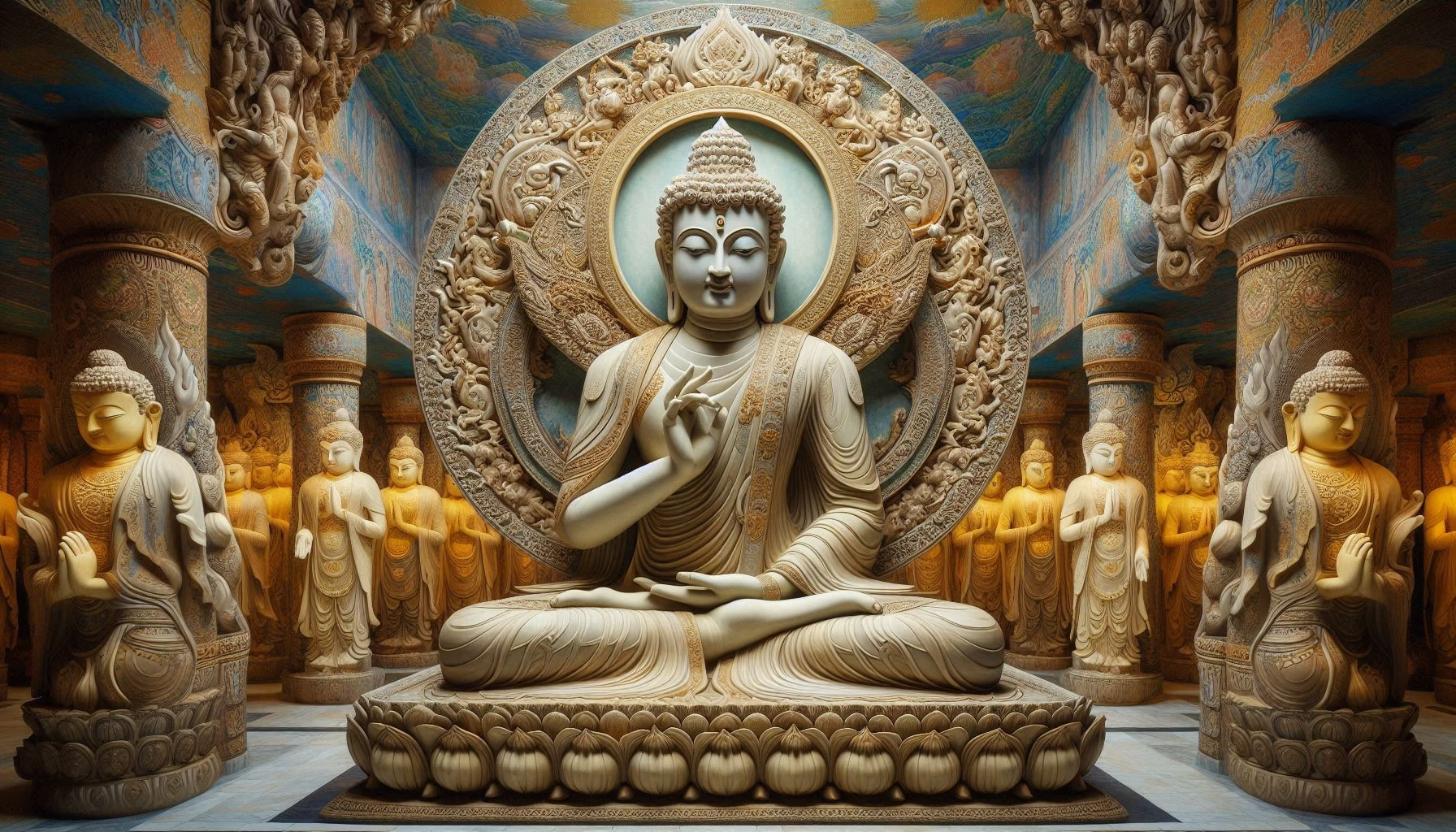
The Art of Enlightenment: Sculpture and Faith in Buddha’s Journey
What Is the Art of Enlightenment?
Through symbolic sculpture Buddhist faith expresses Buddha’s journey and promotes mindfulness to support spiritual development.
The art of enlightenment demonstrates how Buddhist sculpture embodies the deep connection between spiritual beliefs and artistic expression by portraying Gautama Buddha’s enlightenment journey. Artworks filled with symbolic meaning go beyond aesthetic appeal to trigger spiritual awakening. This blog discusses the historical background and cultural impacts of Buddhist sculpture while examining its symbolic meanings within the framework of “art of enlightenment.”
Historical Context of Buddha’s Journey
The spiritual journey of Siddhartha Gautama started with his enlightenment quest after he saw suffering which led to the creation of numerous sculptures. The spread of Buddhism from India to regions including Gandhara and Japan resulted in unique local artistic styles as documented by The Met. Artworks serve as a vessel for Buddha’s story by merging historical elements with spiritual themes across different cultures.
Symbolism in Buddhist Sculpture
Buddhist sculptures are laden with meaning:
- Mudras: Gestures like Abhaya (protection) convey teachings.
- Lotus: Symbolizes purity, rising above worldly struggles.
- Earlobes: Represent renunciation of materialism.
According to the Asian Art Museum these symbols serve as tools for meditation which further enhances spiritual understanding.
Key Elements of Buddhist Sculpture
Distinctive features include:
- Figures: Buddha and Bodhisattvas appear in statues as they meditate or teach.
- Materials: The materials used in sculpture such as stone wood or metal enhance spiritual resonance.
- Motifs: Buddhist teachings find representation through the lotus symbol along with the dharma wheel and lion motif.
These elements work together to express the essential truths of enlightenment.
Buddhist practices integrate artistry with spiritual beliefs to create meaningful religious expressions.
Buddhist sculpture serves as a devotional practice where artists create spiritual gifts through their work. Statues within temples serve as tools for meditation and worship to inspire reflective thought. According to Buddhistdoor modern Buddhist art merges traditional elements with innovative approaches to keep the art of enlightenment fresh and dynamic.
Iconography: Depictions of Buddha
Buddhist iconography includes:
- Dhyana Mudra: Meditation, hands in lap.
- Bhumisparsha Mudra: Enlightenment, touching the earth.
- Ushnisha: Wisdom, a cranial bump.
According to Britannica these symbols serve as guides for practitioners to achieve both meditation and understanding.
Cultural Influences on Buddhist Sculpture
Buddhist sculpture reflects regional diversity:
- Gandhara: Greco-Roman realism, draped figures.
- Chinese: Serene, elegant forms with flowing robes.
- Japanese: Minimalist, wooden sculptures with spiritual depth.
Oxford Art identifies these artistic styles as evidence of Buddhism’s widespread appeal.
Contemporary Interpretations of Buddha’s Journey
Digital and interactive media enables modern artists to reinterpret Buddha’s journey while highlighting contemporary environmental concerns. According to ARTnews these works blend traditional elements with modern relevance to draw new audiences into the enlightening art experience.
Role of Sculpture in Modern Buddhist Communities
Buddhist communities regard sculptures as critical elements for worship practices as well as educational and cultural identity purposes. Through their use in teaching methods and rituals they enable practitioners to connect with traditions while leading them to enlightenment according to Dhamma Wheel.
FAQs About the Art of Enlightenment
- What is the art of enlightenment?
- The art of enlightenment represents how Buddhist faith merges with sculpture to depict Buddha’s path.
- Why are mudras important?
- Mudras serve as vessels to deliver teachings such as protection and meditation practices.
- How did cultures influence Buddhist art?
- Distinct artistic traditions from Gandhara and Japan contributed to the enrichment of Buddhist art diversity.
- Are modern Buddhist sculptures different?
- Buddhist sculptures today utilize new materials while continuing to express spiritual messages.
Conclusion: The Legacy of the Art of Enlightenment
Buddhist sculptures expressing the art of enlightenment combine spiritual devotion with artistic expression to illustrate Buddha’s life path. Symbolic artworks build connections between different cultures and time periods while encouraging mindfulness and compassion. The art of enlightenment allows you to expand your spiritual and artistic understanding.
Discover the art of enlightenment! Explore Buddhist sculptures by visiting museums or browsing online galleries such as Google Arts & Culture. Post your thoughts in the comments section to motivate fellow readers!